Portfolio > Pulse
Goal: reduce student disengagement and confusion in large university lecture classes.


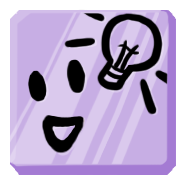



Contextual inquiry
Physical context
University lecture model diagrams
Personas

We developed user stories and personas for our target users: students Tessa, Justin, and Hye-Seong and professors Dr. Olufsen and Dr. Crumplebottom. Eventually we decided to focus on just the students' needs, as they were an audience with more salient needs and more receptivity to new tools.
Paper prototypes
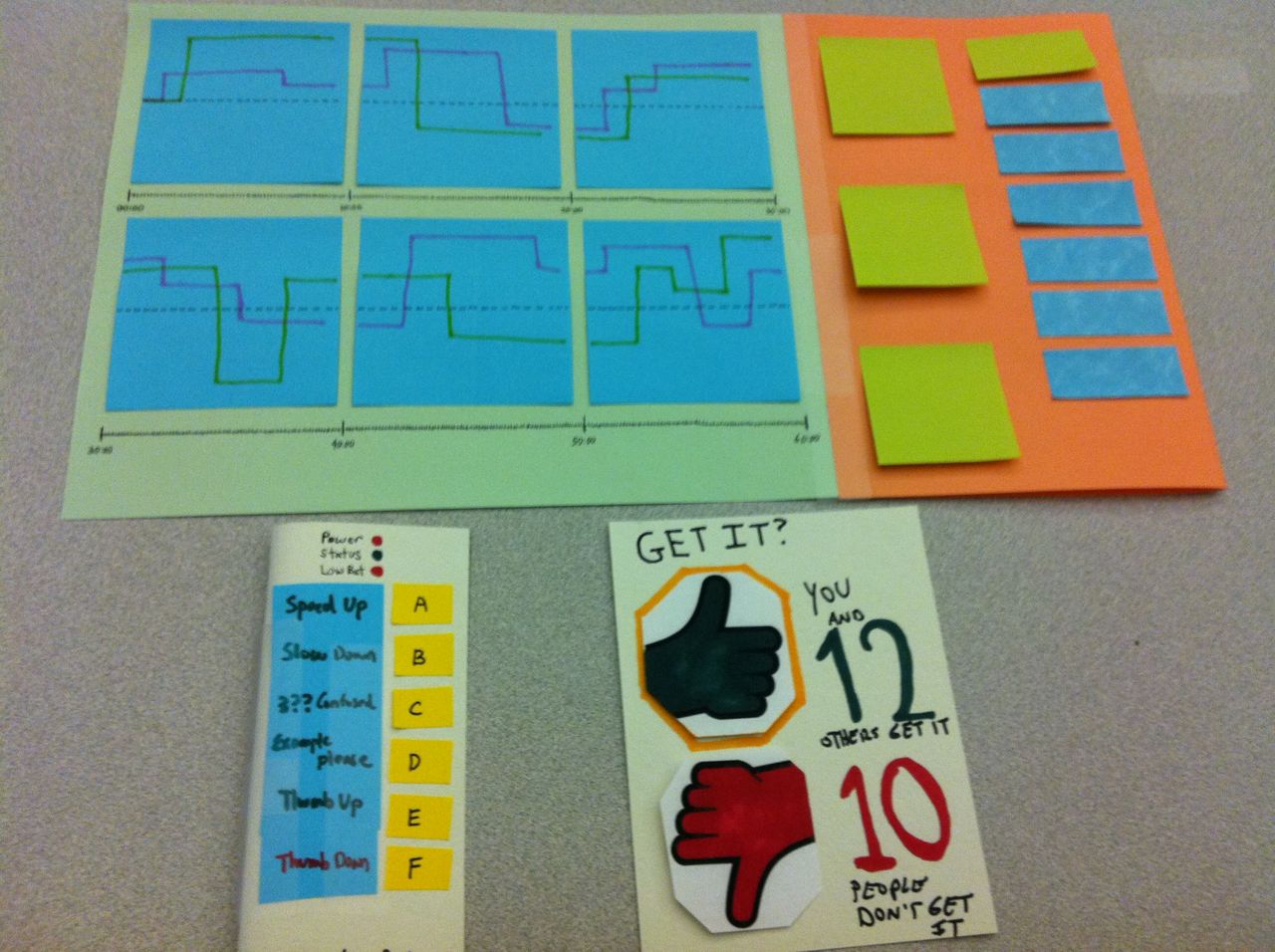
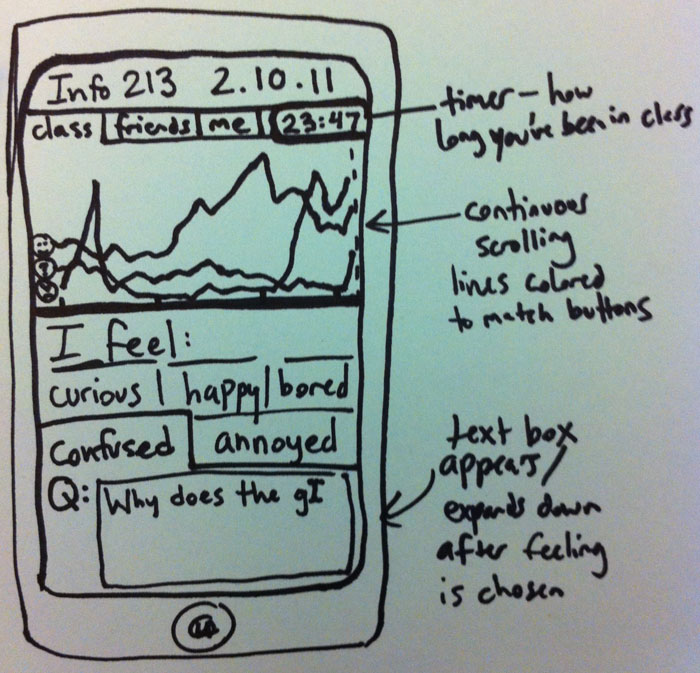
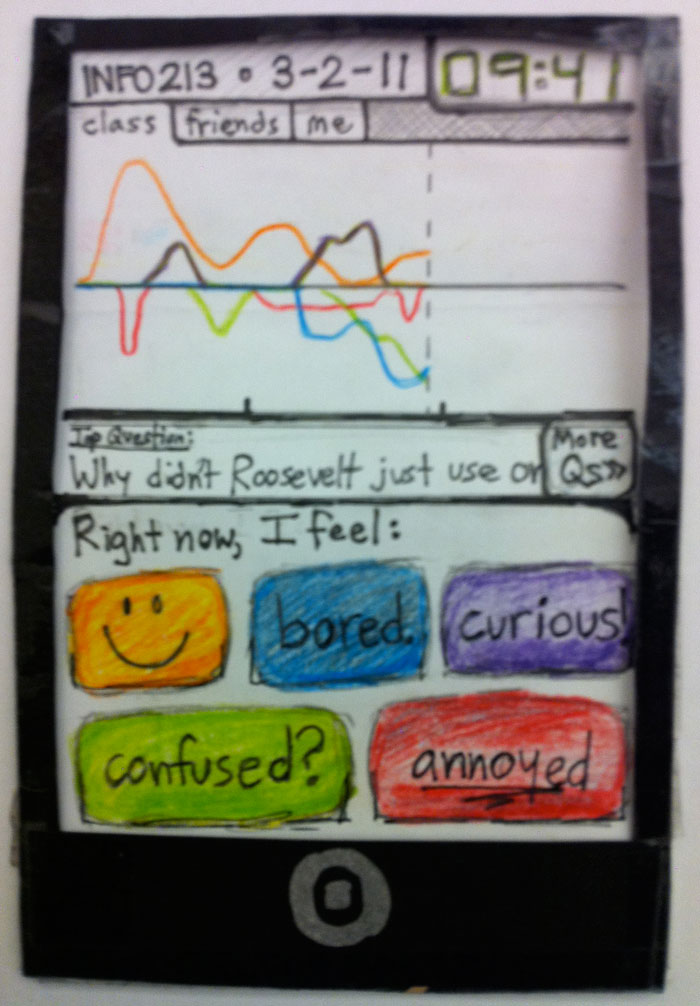
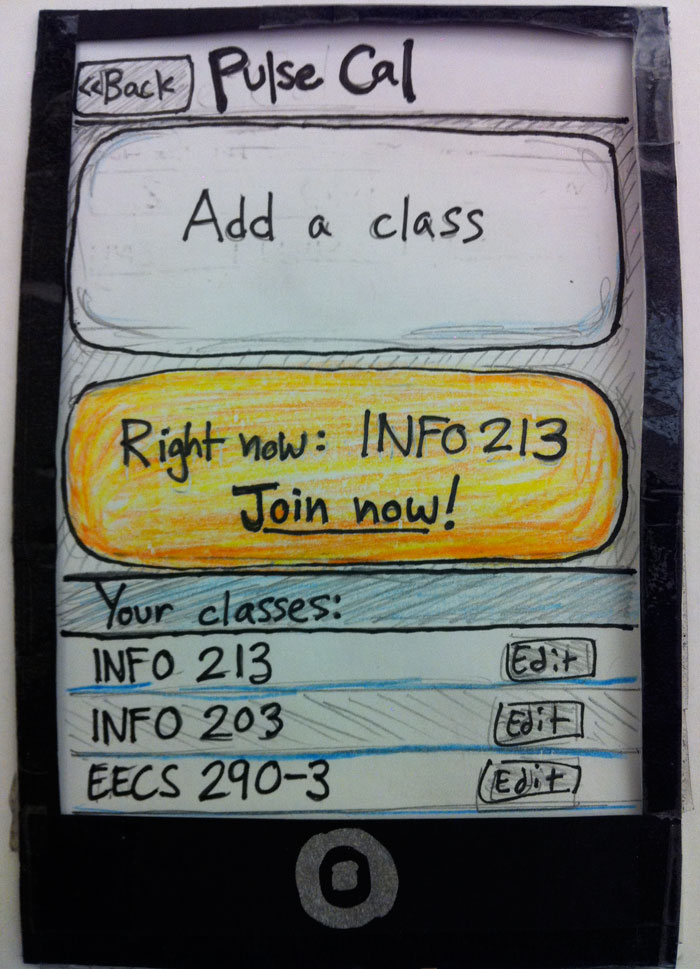
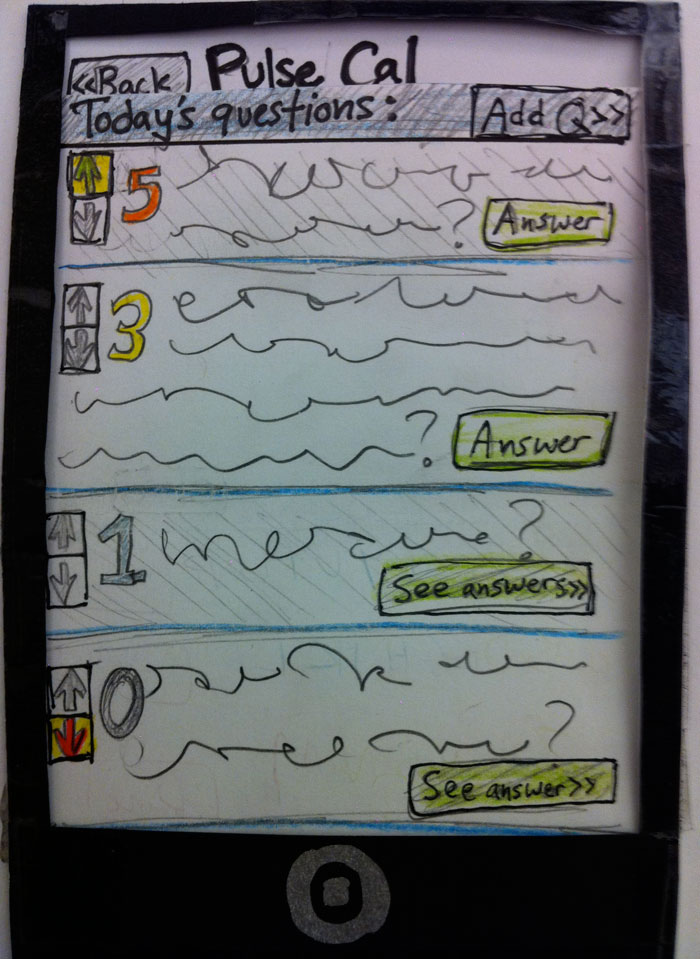
Over the course of the semester we made a series of prototypes from low to high fidelity: sketches to index-card paper prototypes to a Balsamiq demo.
Balsamiq prototype
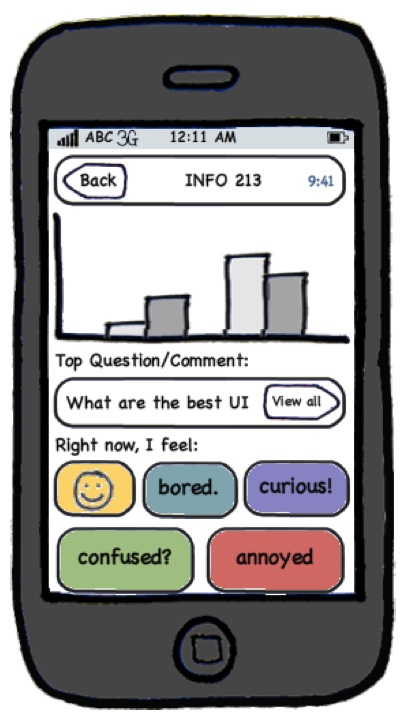
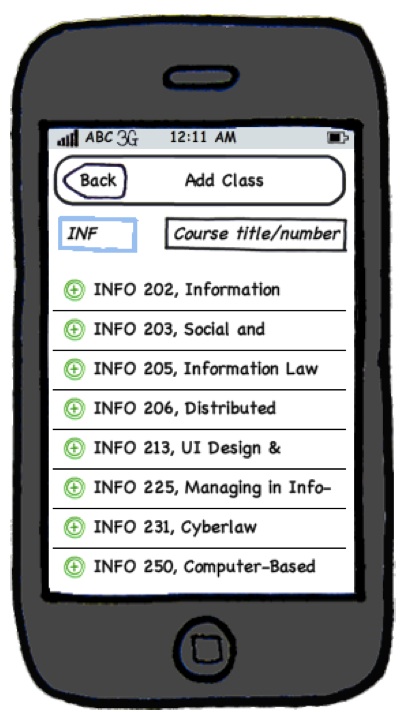
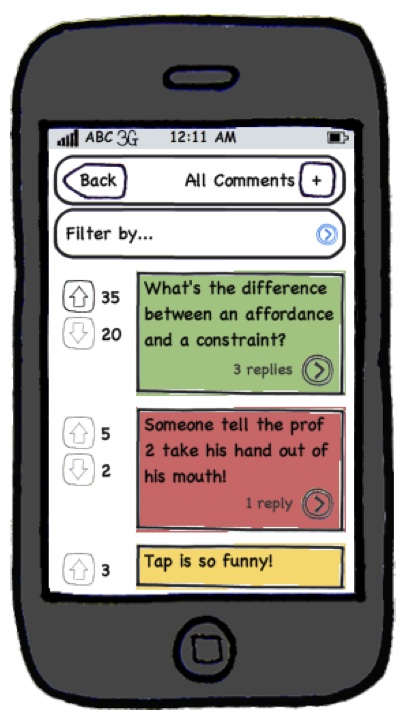
Other students tried out our prototypes at each stage and we gathered qualitative and quantitative data based on their performance and feedback. We presented our project with a final report and a poster presentation at UC Berkeley's EECS department.